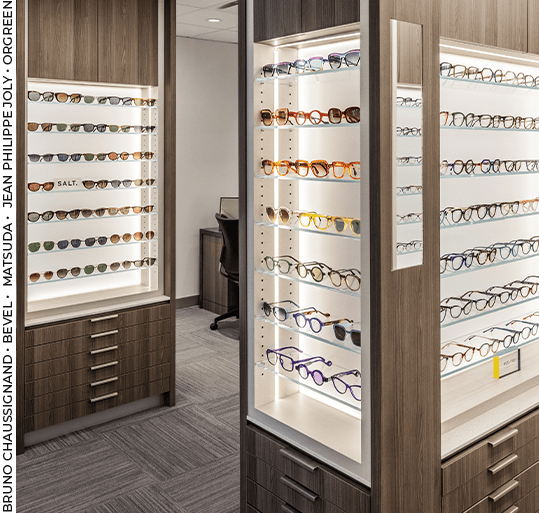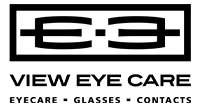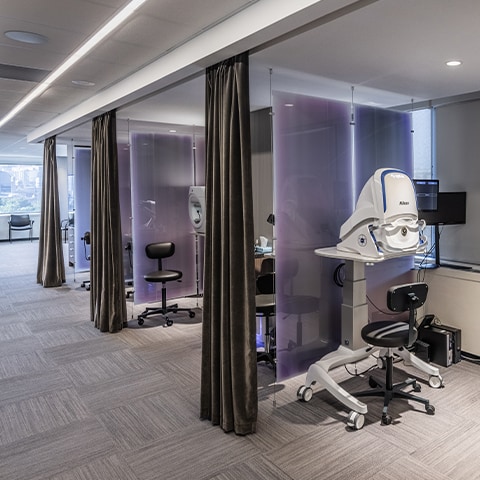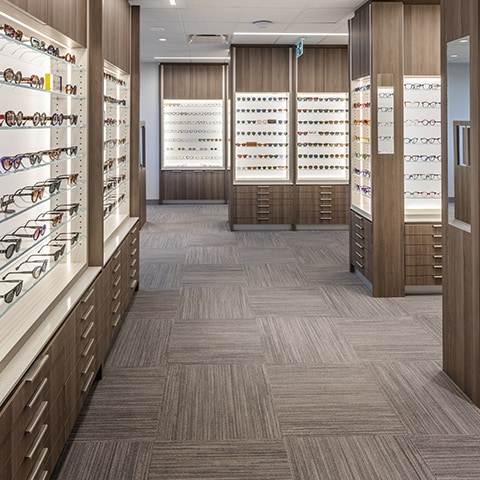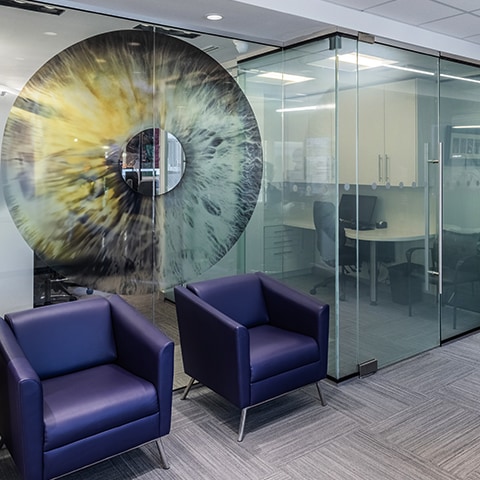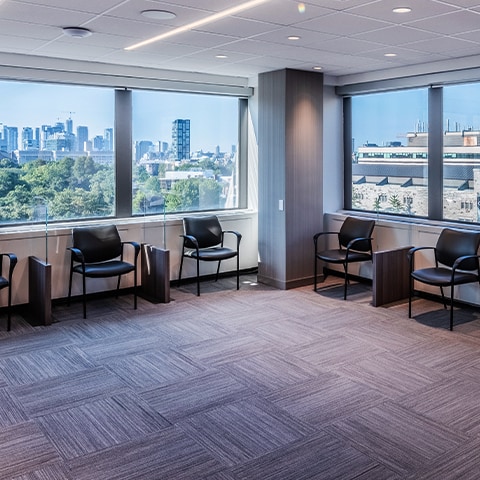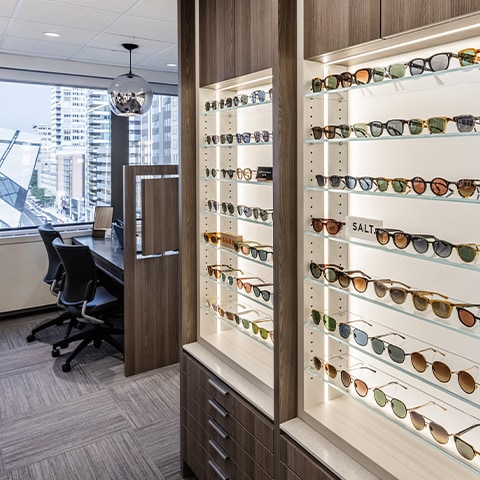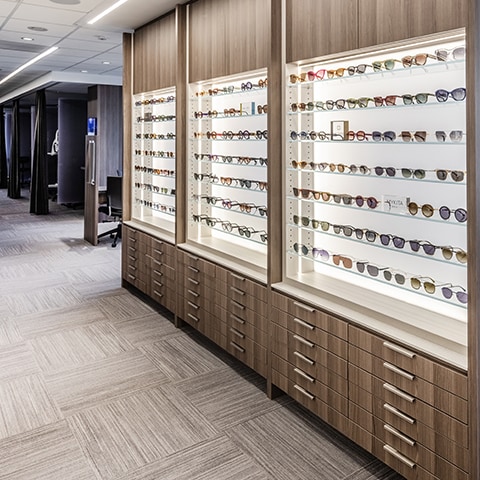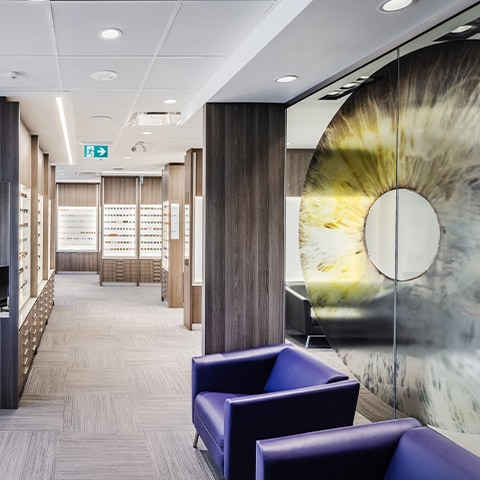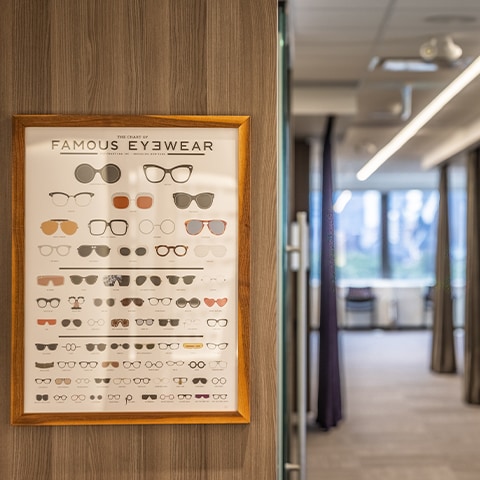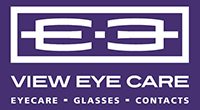Detecting & Diagnosing Eye Diseases
An eye exam is an important part of preventative healthcare. Not only can your optometrist check that your eyewear prescription is providing the vision you want, but during an eye exam, they can also check for the development of eye diseases.
Many eye diseases can damage your vision permanently, and many progress without any noticeable symptoms, particularly in the early stages.
Early identification is crucial for the treatment and management of eye diseases. If your optometrist catches them early enough, they may be able to slow down progression or prevent vision loss.
Your sight is precious. Safeguard it today with a comprehensive eye exam.
Book Appointment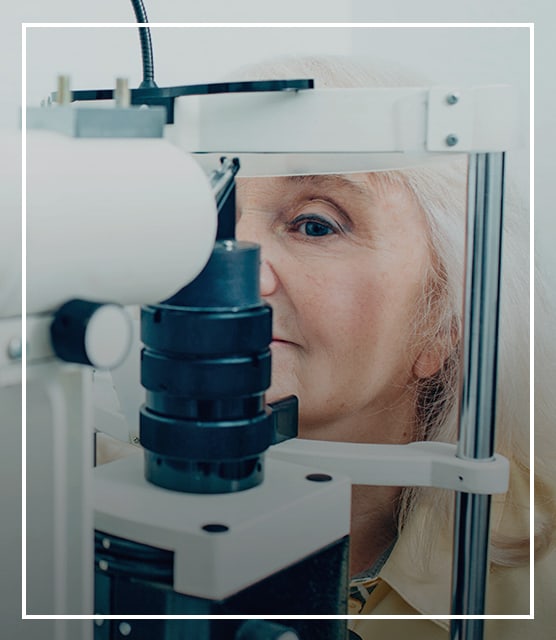
Diabetic Eye Diseases
People with diabetes are at an increased risk of eye diseases. Diabetic retinopathy and diabetic macular edema can lead to irreversible vision loss.
Diabetic retinopathy often progresses slowly and, like many eye diseases, may not present visible symptoms until irreversible vision loss occurs. Diabetic macular edema is quite serious and can impact the ability to read, write, drive, and recognize faces.
Both conditions can be identified early with a comprehensive diabetic eye exam. If you have diabetes, book your appointment now.
Glaucoma
Glaucoma is a group of eye diseases generally characterized by damage to the optic nerve, often related to elevated intraocular pressure.
Pressure builds up inside the eye, damaging the optic nerve and causing irreversible vision loss. Often, the progression of glaucoma is slow and symptom-free, earning the disease the nickname the silent thief of sight.
There are several types of glaucoma. Click on each type to learn more.
Open-Angle Glaucoma
Fluid buildup within the eye caused by blockage of the eye’s drainage channels can increase intraocular pressure (IOP) and cause open-angle glaucoma. Generally, peripheral vision is the first thing affected, followed by central vision.
Angle-Closure Glaucoma
Angle-closure glaucoma occurs when the space between the iris and cornea narrows, trapping fluid in the eye. When the pressure rises as a result of this fluid, angle-closure glaucoma occurs.
It can appear suddenly (acute) or progress gradually (chronic). Acute angle-closure glaucoma is a medical emergency. Sudden onset headaches, blurry vision, eye redness, or halos appearing around lights mean you should call your optometrist immediately.
Other Types of Glaucoma
Secondary glaucoma occurs when intraocular pressure increases due to trauma, internal eye infection, or the abnormal “flaking” from the internal tissues of the eye.
When the optic nerve is damaged but intraocular pressure remains within normal range, normal-tension glaucoma may be the cause.
Glaucoma Risk Factors
Glaucoma risk factors may include:
- A family history of glaucoma
- Extreme refractive errors
- Past eye injury or trauma
- Use of certain medications
- Heart disease, diabetes, or high blood pressure
Cataracts
As you age, the clear lens of your eye can harden and become opaque. This is called a cataract. They are often the result of the normal aging process, though they can appear congenitally in children.
Cataracts can develop faster in those with diabetes, smokers, those who have been exposed to excessive amounts of UV without protective eyewear, and eyes who have suffered trauma.
Symptoms of Cataracts
Cataracts generally develop without pain or redness. Some symptoms of cataracts might include:
- Foggy or blurry vision
- Difficulty seeing at night
- Seeing halos around lights
- Muted colour vision
- Sensitivity to light
Preventing Cataracts
Cataracts can be managed by protecting the eyes from UV rays.
A great pair of sunglasses can help, but eating foods rich in antioxidants like blueberries, apples, artichokes, and dark green veggies like kale and broccoli may also help to prevent cataracts!
Additionally, maintaining a healthy diet, not smoking, and exercising regularly can all help lower the risk of developing cataracts.
Cataract Treatment
Corrective lenses often help manage the visual effects of cataracts. Sometimes, though, glasses or contact lenses might not provide the vision you need. In such cases, we may suggest surgery.
If you’re having a difficult time driving, performing your job safely, watching television or reading, or are experiencing challenges with daily activities that are decreasing your quality of life, it might be time to consider surgery.
Cataract surgery is safe and effective and we can help you understand the procedure and your options.
Age-Related Macular Degeneration
Age-related macular degeneration (AMD) causes the breakdown of the macula, the area of the eye responsible for central vision. Damage to the macula can lead to central vision loss.
The central vision is responsible for reading, writing, driving, and recognizing faces, so any loss of vision in this area may make day-to-day tasks difficult.
People with AMD may not experience any pain or symptoms as the disease progresses. If straight lines begin to appear wavy or your central vision blurs in a way that cannot be corrected by glasses, it’s time for an eye exam.
There are 2 types of AMD:
Dry AMD
Wet AMD
A less common type of the disease, Wet AMD is responsible for the majority of cases of blindness as a result of AMD. Wet AMD occurs when blood vessels grow under the retina, burst, and leak fluid into the macula.
We’re On the Lookout for Early Signs of Eye Disease
Regular, comprehensive eye exams are the best first line of defence against eye diseases that can cause irreversible vision loss.
Book your appointment today, and let us examine your eyes for early signs of eye disease.
Book AppointmentOur Location
We are located in Toronto’s Yorkville neighbourhood in the second building just east of Avenue Road. Look for the “151” sign on the building right above the doors, which may be easier to see from the North side of the street. The building’s “151” sign can be hard to spot from the south side—look directly across from Tiffany & Co.
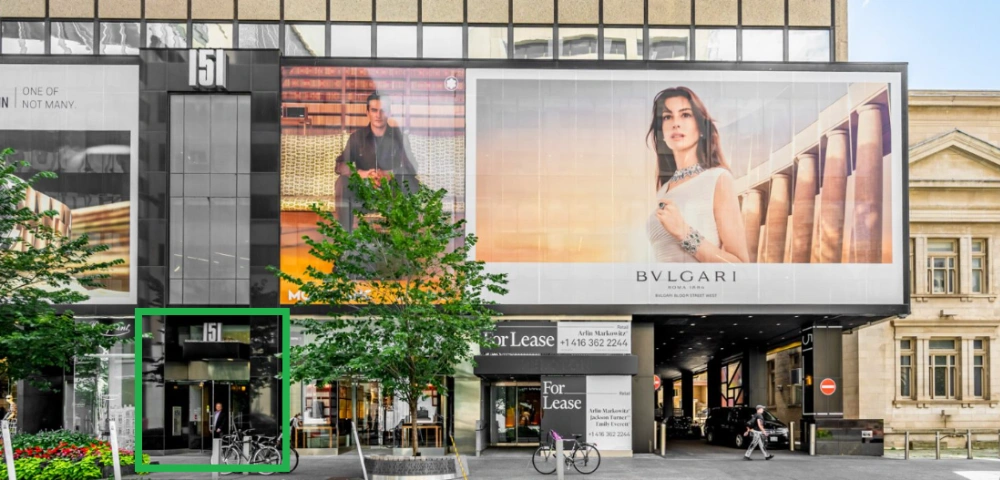
Parking
Colonnade Garage (Currently under construction – parking here is very limited!):
Located on the south side of Bloor between Avenue Rd. and Bay St.
- Height limit: 5’8”
- Entrances:
- Off Bloor (west of St. Thomas St., before the crosswalk)
- Via St. Thomas St. → right on Sultan St. → garage entrance at end
Directions
- Driving west on Bloor: After Bay St., turn left on St. Thomas, right on Sultan.
- Driving east on Bloor: After passing our office, turn right on St. Thomas, right on Sultan.
- Missing the turn adds a long detour!
- Video directions for parking
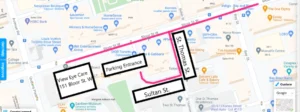
Notes
- License plates are scanned—pay at exit.
- Lot fills quickly; allow extra time.
- After parking, exit onto Bloor via the Colonnade; our building is a short walk west (turn left).
- Alternate parking:
- Manulife Centre, 44 Charles St. W (7-min walk)
- Yorkville Village, 55 Avenue Rd (5-min walk)
- No validation available through our office.
TTC Directions
Our office is within walking distance of Bay, St. George, and Museum stations.
- From Bay Station (Bloor Line): Video Directions
Exit Bay St., walk south to Bloor, then west toward Avenue Rd. Cross to the south side; entrance is a few doors east of Avenue Rd. - From Museum Station (Yonge-University Line): Video Directions
Walk north on Queen’s Park/Avenue Rd., turn right on Bloor (east). Our entrance is a few storefronts in. - From St. George Station (Yonge-University Line):
Exit to Bedford Rd., walk south to Bloor, turn left (east), cross to the south side, and continue past the ROM.

*We are closed on statutory holidays.
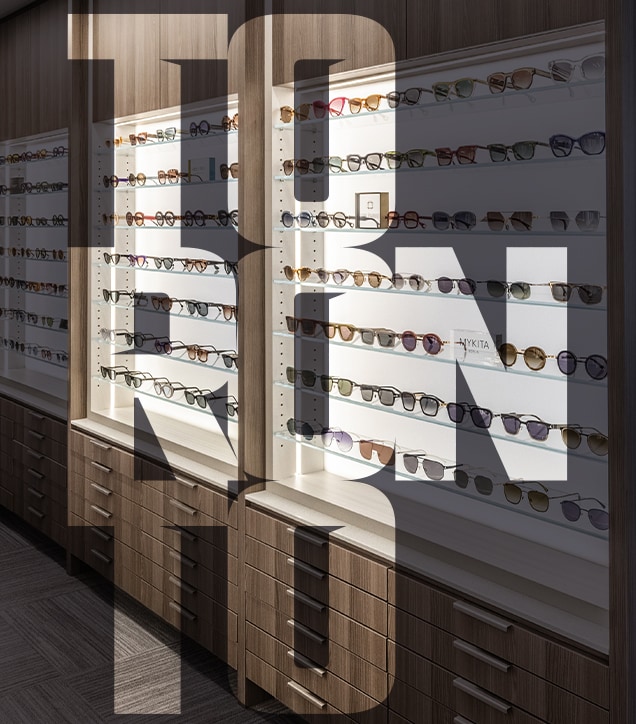
Our Address
- 151 Bloor St W, Suite 703
- Toronto, ON M5S 1S4
Contact Information
- Phone: 416-923-8439
- Email: appointments@vieweyecare.com
Hours of Operation
- Monday: 8:00 AM – 6:00 PM
- Tuesday: 8:00 AM – 6:00 PM
- Wednesday: 8:00 AM – 6:00 PM
- Thursday: 8:00 AM – 6:00 PM
- Friday: 8:00 AM – 4:00 PM
- Saturday: Closed
- Sunday: Closed
Our Services
Our Brands
